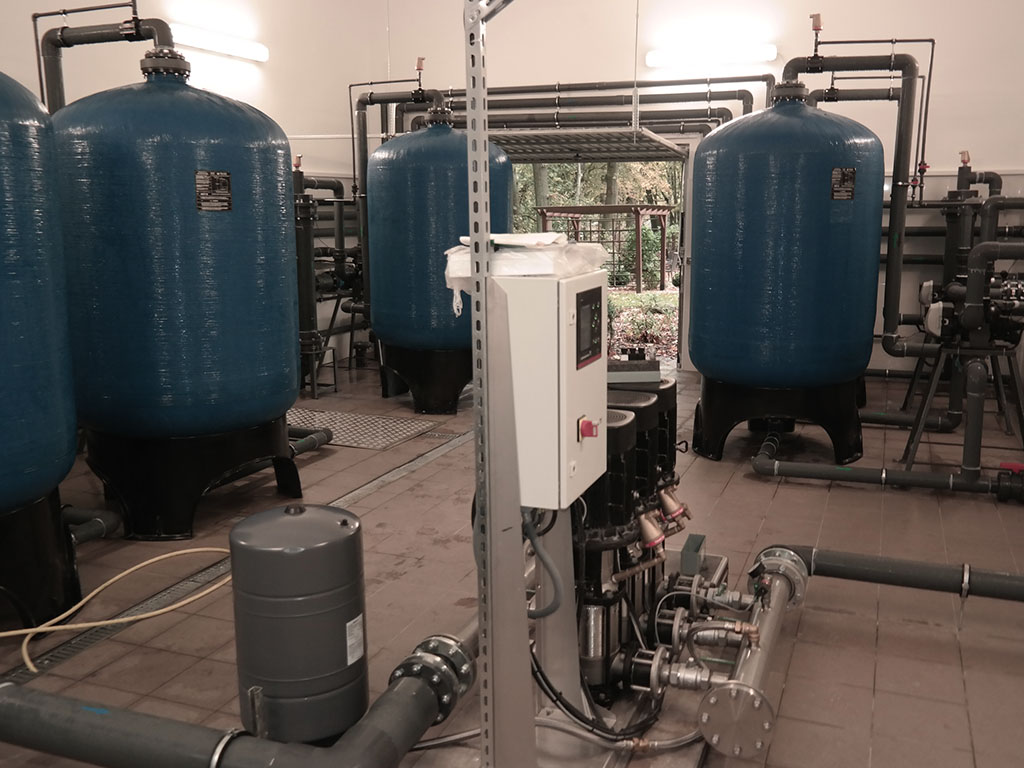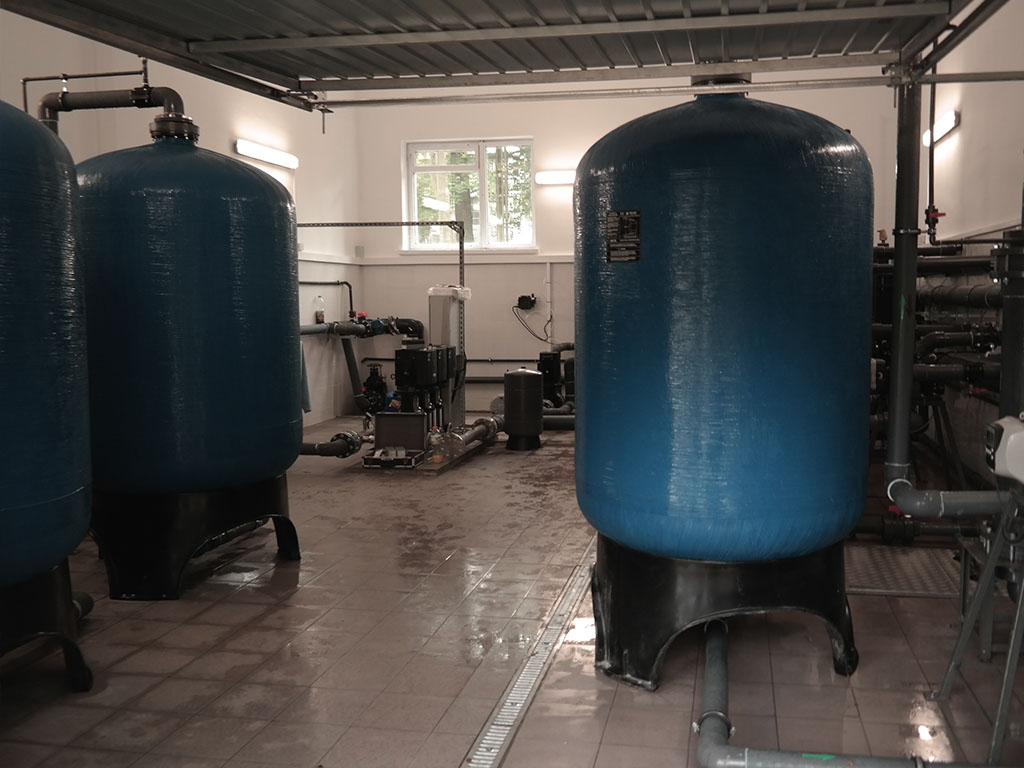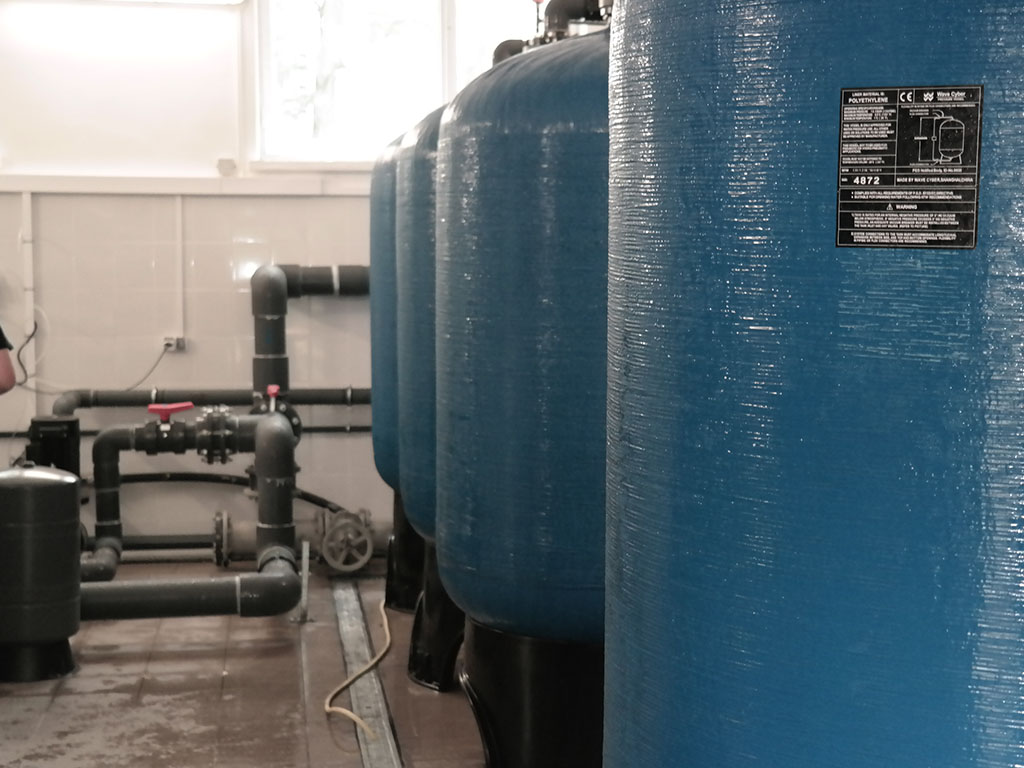Water supply systems, both large municipal but also smaller systems for private or commercial use are designed to provide continuous supply of water that is both hygienically safe and of good quality.
There are many different types of contaminants in the water that is conveyed through the water supply system. They include salts, gases (in groundwater), as well as organic material and other particles.
The key is to neutralize excessive amounts of iron, manganese, ammonia, nitrates and carbon dioxide that may be present in drinking water as they have a negative effect on, e.g. performance and condition of the pipes that make the water supply systems (causing their corrosion).
How can excessive amounts of elements such as iron and manganese be identified? If the water we use at home or at work takes on a strange colour and its taste is not neutral, then it is almost certain that professional de-ironing and de-manganizing will be necessary.
If there is more iron in the water, the water will take on a reddish colour and will also have an unpleasant aftertaste. Whereas, a yellowish colour, indicates high manganese concentrations.
What steps should be taken to resolve the water quality problem quickly and effectively?
Granimex offers many different solutions – proven and reliable. As for smaller water supply systems, a water treatment plant is an ideal solution for ground water. This plant is a complete and entirely self-contained system that can undoubtedly handle a variety of hazards.
If there are excessive amounts of the above elements (but also CO2) in the water, it is best to use properly matched filters or, in this case, closed tank pressure filters, which additionally remove suspended solids of various sorts.
These devices are very popular with customers because of their small size combined with excellent performance, but also due to the fact that there are two versions available (adapted to individual needs of customers). If water extraction rate is intensive, automatic filters are perfectly suitable, but if the rate is low then a manual filter is an excellent choice.
The process of water treatment (so-called raw water) always depends on its physical and chemical characteristics. In the case of deep water, for example, too much carbon dioxide may be present in relation to the amount of oxygen. The water often has too high iron or manganese content. The characteristics of the water determine which water treatment technology is used.
What really counts are comprehensive solutions ensuring highest level of safety and quality of treated water, which is to be fed into water supply system. Granimex makes various designs and models of plants for many entities operating on the tap water supply market.
When ground water is treated, the plant is equipped with a pressure filter which not only allows for filtration, but also for water oxidation (we always match the type of bed with contaminants so that the filter can successfully deal with them). The substances we want to get rid of are then pumped out during the backwash process. It is also necessary to conduct water aeration (there is a set of devices specially intended for this purpose that very precisely determines air content in water).
Each plant must also be equipped with a tank in which treated water can be stored and then distributed to customers.
The stations may differ from each other (they are more or less complex). Their common feature is a security system, which can be called a central control function as it controls and monitors ongoing operations of the plant in the safest way i.e. automatic.
When handling tap water, special attention should be given to the technology that can be used to remove nitrates.
When it comes to nitrates, we must first mention ammonia. If it is present in the water, it can indicate that the water is (for various reasons) contaminated. Sometimes it is caused by fertilizers, but also by natural factors, such as geological features of the environment from which the water is sourced or processes of plant decomposition.
Why do we mention ammonia in the context of nitrates in water? Because of nitrification, i.e. a process by which ammonia (ammonium ion) is converted to nitrites and then to these very nitrates.
Nitrification is a biological process that (often) takes place during the removal of iron and manganese. Removing the ammonium ions (also known as ammonia nitrogen) in the nitrification process is only possible if certain technological conditions are maintained - it basically involves providing large amounts of oxygen.
Other, less popular methods used to remove ammonium ions include ion exchange and degassing.
If the right procedures are followed, which also applies to nitrate removal, there is no need to be concerned about the hazardous effects caused by ammonia present in water. The permissible amount of ammonia is determined by law, according to the provisions of the regulation of the Ministry of Health, drinking water must contain less than 0.5 mgNH4+/dm3.
Only comprehensive measures, such as: removal of ammonium ion and already mentioned de-ironing, and if necessary also de-manganizing and neutralizing excessive amounts of carbon dioxide will produce tap water that meets the expectations of its end user.
As always, defining the final efficiency of the entire process starts with a detailed analysis of water characteristics (before treatment).
When you choose to work with our company, you get the whole package, starting from the assessment of water characteristics, the design which determines which technologies and equipment will be used, through the installation and finally maintenance and repair services.







